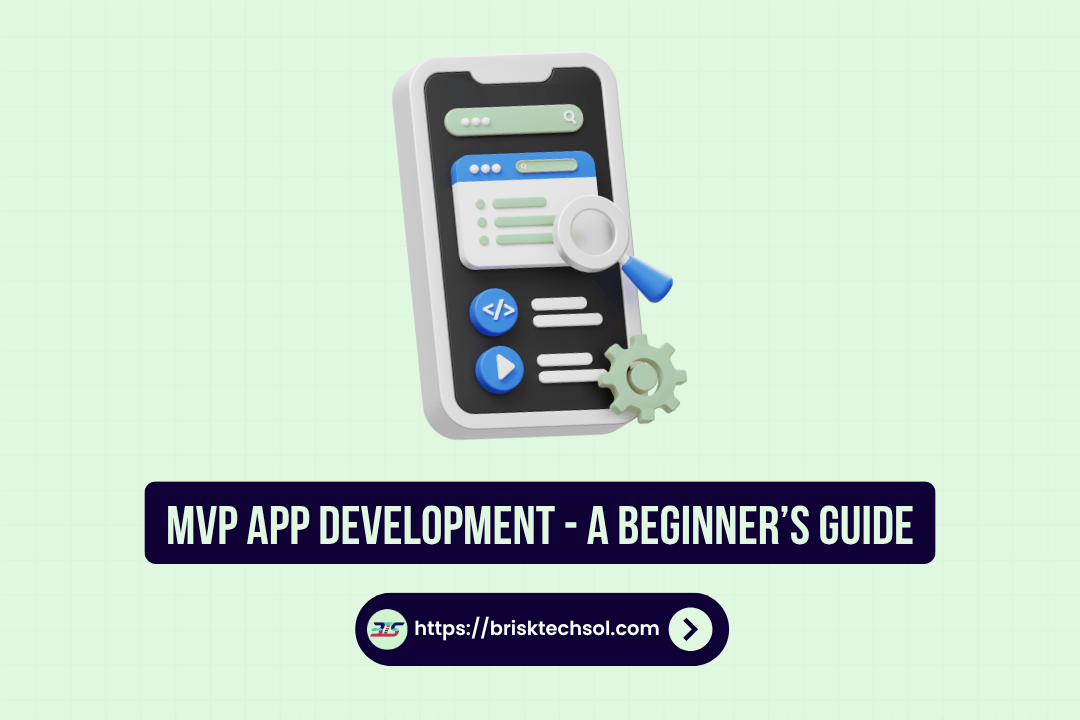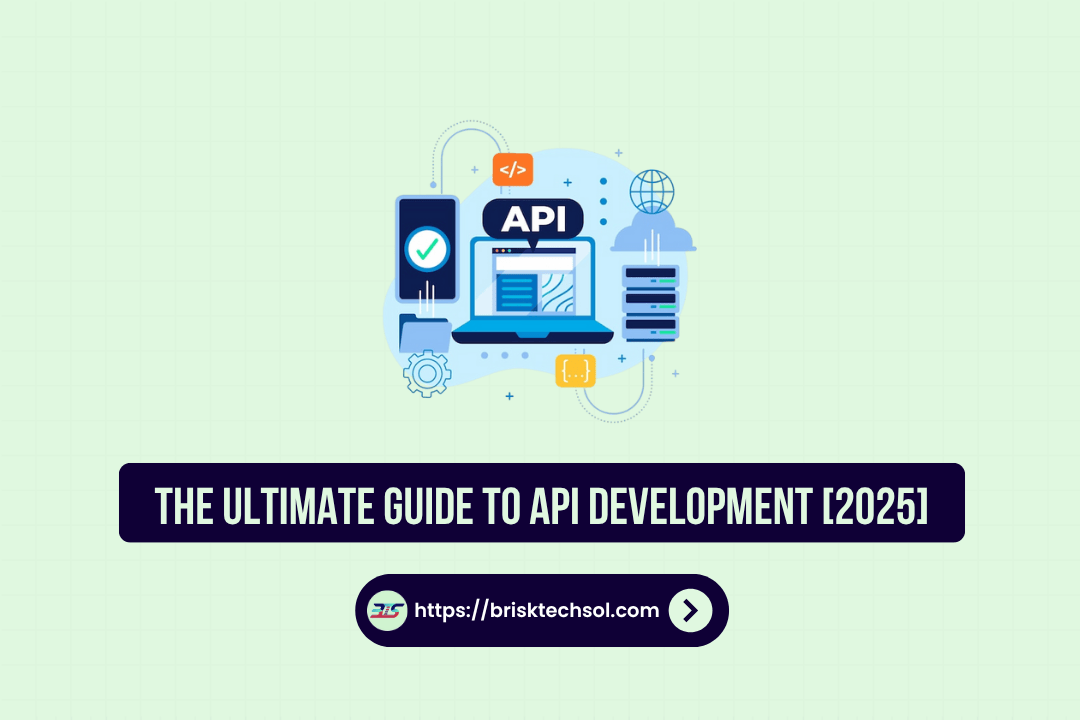UI development is more critical than ever. As technology advances, UI developers must adapt to new trends and tools. In 2025, mastering modern coding standards, responsive design, and advanced frameworks is essential. This article outlines the top 10 UI developer skills you need to succeed in an increasingly competitive market.
Overview of UI Development in 2025
The world of UI development is experiencing a transformative era. With mobile usage skyrocketing and user expectations reaching new heights, developers are challenged to create interfaces that are not only visually appealing but also highly functional. In 2025, the integration of artificial intelligence, progressive web applications, and advanced prototyping tools has redefined the development process. Modern UI development emphasizes not just aesthetics but also performance, accessibility, and seamless interactivity.
Statistics reveal that websites with responsive designs enjoy up to a 50% increase in mobile traffic and improved user retention rates. Additionally, adherence to accessibility guidelines not only broadens market reach but also significantly boosts SEO performance. As a result, modern UI developers are expected to balance creativity with technical expertise, integrating both design principles and coding proficiency. This comprehensive evolution underscores the need for a well-rounded skill set, as detailed in the following top 10 skills essential for any UI developer in 2025.
Mastering HTML5, CSS3, and JavaScript
In today’s digital ecosystem, proficiency in HTML5, CSS3, and JavaScript is non-negotiable. These core technologies form the backbone of any web interface. HTML5 provides the semantic structure necessary for modern websites, while CSS3 introduces advanced styling capabilities and responsive features. JavaScript, with its evolving ES standards, powers interactive and dynamic content that enhances user engagement.
Developers must now use modern coding practices, such as modular JavaScript and component-based design, to create maintainable code. New features like semantic tags in HTML5 improve SEO by enabling search engines to better understand page content. Meanwhile, CSS3 innovations such as Flexbox and Grid allow for complex layouts that adapt fluidly to different screen sizes.
Quick Comparison Table: HTML/CSS Evolution
| Feature | Traditional Approach | Modern Approach (HTML5/CSS3) |
|---|---|---|
| Structure | Div-heavy | Semantic elements (header, footer) |
| Layout | Float-based | Flexbox & Grid systems |
| Interactivity | Minimal scripting | Robust JavaScript frameworks |
This strong skill set lays a solid foundation for further specialization. UI developers who master these languages not only create visually compelling interfaces but also ensure that their designs are accessible and performance-optimized.
Responsive & Mobile-First Design
As mobile traffic continues to dominate, responsive and mobile-first design has become a cornerstone of modern UI development. This approach prioritizes the mobile experience by designing layouts that adapt to various devices and screen resolutions. Utilizing CSS media queries, fluid grids, and flexible images, developers can ensure their sites are accessible and user-friendly on smartphones, tablets, and desktops.
Recent studies show that a responsive design can increase mobile traffic by up to 50% while reducing bounce rates significantly. Frameworks such as Bootstrap and Foundation simplify the process by offering pre-designed components that are inherently mobile-friendly. The mobile-first philosophy also encourages designers to focus on simplicity and speed key factors that improve overall user satisfaction and SEO performance.
Quick Comparison Table: Responsive vs. Adaptive Design
| Aspect | Responsive Design | Adaptive Design |
|---|---|---|
| Flexibility | Fluid layouts, media queries | Fixed layouts, device-specific |
| Development Speed | Faster with modern frameworks | Requires multiple templates |
The importance of a mobile-first strategy cannot be overstated. Developers who integrate responsive design principles can deliver a consistent user experience across all devices, ensuring that performance and engagement metrics remain high.
UI/UX Design Principles and Tools
UI and UX are two sides of the same coin. While UI focuses on the visual elements of a product, UX delves into user behavior and the overall experience. Mastering design principles is critical for creating intuitive interfaces that meet user needs. Techniques like design thinking and user-centered design help developers create solutions that are both innovative and practical.
Popular prototyping tools like Figma, Adobe XD, and Sketch empower designers to iterate quickly and test ideas in real time. These tools streamline collaboration between developers and designers, ensuring that the final product aligns with user expectations. Data shows that websites with superior UI/UX design see higher conversion rates and improved customer satisfaction.
Quick Tool Comparison Table: UI/UX Design Tools
| Tool | Key Features | Price Range |
|---|---|---|
| Figma | Real-time collaboration | Free to Paid |
| Adobe XD | Integrated with Adobe suite | Subscription-based |
| Sketch | Vector-based design | One-time purchase |
By embracing strong UI/UX principles and using modern design tools, developers can create digital products that are both aesthetically pleasing and functionally intuitive. These practices not only enhance user engagement but also help build a loyal customer base.
Proficiency in Front-End Frameworks (React, Angular, Vue)
Modern UI development is powered by front-end frameworks such as React, Angular, and Vue. These frameworks simplify the creation of interactive, component-based interfaces, enabling developers to build scalable applications efficiently. React, known for its virtual DOM, offers high performance and flexibility, while Angular provides a complete framework with built-in tools and dependency injection. Vue strikes a balance with an approachable learning curve and a robust ecosystem.
Adopting these frameworks not only speeds up development but also enhances maintainability and code reuse. Recent industry surveys indicate that over 70% of front-end developers use at least one modern framework to streamline their workflow. The choice of framework often depends on project requirements and team expertise, but all three offer strong community support and continuous updates.
Quick Comparison Table: Front-End Frameworks
| Framework | Strengths | Ideal For |
|---|---|---|
| React | Flexibility, high performance | Dynamic UIs, single-page apps |
| Angular | Comprehensive, enterprise-ready | Large-scale applications |
| Vue | Simplicity, gentle learning curve | Rapid prototyping, small to medium projects |
Keeping abreast of framework updates and best practices is essential for UI developers. Mastery of these tools ensures that you can deliver high-quality, performant applications that meet the expectations of modern users.
Accessibility (a11y) and Inclusive Design
Accessibility is no longer an optional add-on; it’s a fundamental requirement for any digital product. Following WCAG (Web Content Accessibility Guidelines) helps ensure that websites and applications are usable by people with disabilities. This includes considerations such as keyboard navigation, screen reader compatibility, and appropriate color contrasts.
Statistics indicate that nearly 15% of the global population experiences some form of disability. By integrating accessibility best practices, UI developers not only expand their audience but also improve overall SEO performance. Tools like Axe, Lighthouse, and WAVE assist in evaluating and enhancing accessibility compliance. Adopting inclusive design principles can lead to a more engaging and equitable user experience.
Quick Accessibility Tools Table
| Tool | Functionality | Benefits |
|---|---|---|
| Axe | Automated accessibility testing | Quick diagnostics |
| Lighthouse | Performance and accessibility audits | Comprehensive reporting |
| WAVE | Visual feedback on accessibility issues | Easy-to-understand interface |
Embracing accessibility and inclusive design is both a legal and ethical imperative. UI developers who prioritize these principles help build a more inclusive web while also ensuring that their projects comply with evolving regulatory standards.
Performance Optimization & SEO Best Practices
Performance optimization is crucial for user retention and SEO success. Fast-loading pages not only improve user satisfaction but also contribute to higher search engine rankings. Techniques such as code minification, image compression, lazy loading, and caching are vital for enhancing page speed. Google’s Core Web Vitals provide benchmarks that guide developers in optimizing their websites.
Industry data reveals that even a one-second delay in page load time can lead to significant drops in conversion rates. Moreover, clean and efficient code enhances SEO by ensuring that search engine bots can crawl and index content effectively. Developers must balance aesthetics with performance by employing best practices in both coding and resource management.
Quick Performance Optimization Table
| Optimization Technique | Impact on Performance | Tools/Resources |
|---|---|---|
| Code Minification | Reduces file size | UglifyJS, CSSNano |
| Image Compression | Faster image load times | TinyPNG, ImageOptim |
| Lazy Loading | Loads content on demand | Native lazy loading, Intersection Observer |
By continuously monitoring performance metrics and refining SEO practices, UI developers can create high-performing interfaces that boost both user engagement and search engine visibility.
Cross-Browser Compatibility & Testing
Ensuring that web applications function uniformly across all browsers is a fundamental skill. Cross-browser compatibility testing helps developers identify and resolve discrepancies in design and functionality. With browser usage statistics constantly shifting, it’s essential to verify that websites perform well on Chrome, Firefox, Safari, Edge, and even legacy browsers.
Automated testing tools like BrowserStack, Sauce Labs, and Selenium simplify the process of validating UI performance across various platforms. Data from recent surveys shows that a significant percentage of users rely on multiple browsers to access content, making cross-browser testing a critical component of quality assurance. Developers must be adept at troubleshooting compatibility issues and ensuring that code adheres to modern standards.
Quick Testing Tools Table
| Testing Tool | Key Features | Advantages |
|---|---|---|
| BrowserStack | Real device testing | Extensive device library |
| Sauce Labs | Cloud-based testing | Scalable testing infrastructure |
| Selenium | Automated browser testing | Flexible integration with CI/CD |
A commitment to cross-browser compatibility guarantees that every user enjoys a seamless experience regardless of the device or browser they choose. This skill is indispensable for maintaining brand credibility and user satisfaction.
Version Control and Agile Methodologies
Efficient collaboration and code management are vital for modern UI development. Version control systems, particularly Git, allow developers to track changes, collaborate seamlessly, and roll back errors when needed. Alongside this, agile methodologies have transformed how teams work together, emphasizing rapid iteration, continuous integration, and adaptive planning.
Studies reveal that teams utilizing agile practices experience faster development cycles and increased productivity. Tools such as GitHub, GitLab, and Bitbucket have become industry standards, facilitating transparent and efficient workflows. Furthermore, agile frameworks promote a culture of continuous improvement, enabling teams to respond quickly to feedback and shifting project requirements.
Quick Methodologies Comparison Table
| Aspect | Agile Methodologies | Traditional Waterfall |
|---|---|---|
| Flexibility | High | Low |
| Collaboration | Continuous, iterative | Sequential, less interactive |
| Delivery Speed | Rapid, incremental | Slower, end-to-end delivery |
By mastering version control and agile practices, UI developers can enhance teamwork, reduce errors, and maintain a steady pace of innovation—critical factors in the fast-paced world of front-end development.
Security Best Practices for UI Development
Security is an integral aspect of UI development. With cyber threats on the rise, developers must be vigilant about secure coding practices, data encryption, and vulnerability management. Implementing secure design patterns and regularly auditing code can help mitigate risks associated with XSS attacks, CSRF, and other common exploits.
Recent research indicates that web security breaches cost companies millions in damages. Incorporating security best practices—such as using HTTPS, secure APIs, and proper authentication methods—ensures that user data remains protected. Tools like OWASP ZAP and Burp Suite are essential for identifying and addressing vulnerabilities early in the development process.
Quick Security Best Practices Table
| Practice | Benefit | Tools Recommended |
|---|---|---|
| HTTPS & Secure APIs | Data encryption and integrity | SSL Labs, Let’s Encrypt |
| Input Validation | Prevents injection attacks | OWASP, Snyk |
| Regular Audits | Early vulnerability detection | Burp Suite, OWASP ZAP |
UI developers must integrate security into every stage of development. A secure UI not only safeguards sensitive data but also builds user trust and supports long-term brand reputation.
Essential Soft Skills & Team Collaboration
While technical skills are crucial, soft skills play an equally important role in UI development. Effective communication, problem-solving, and teamwork ensure that projects move smoothly from conception to launch. In today’s agile environments, the ability to collaborate with cross-functional teams is indispensable.
Soft skills such as empathy and adaptability enable developers to understand client needs and user expectations more deeply. Studies have shown that teams with strong interpersonal skills are more innovative and efficient. Tools for project management and collaboration like Slack, Trello, and Asana further support a culture of open communication and continuous improvement.
Quick Soft Skills Table
| Soft Skill | Impact on UI Development | Examples of Application |
|---|---|---|
| Communication | Clear articulation of design ideas | Daily stand-ups, code reviews |
| Problem-Solving | Effective troubleshooting and innovation | Debugging sessions, brainstorming |
| Collaboration | Smooth teamwork and project flow | Agile ceremonies, collaborative tools |
Cultivating these soft skills not only improves project outcomes but also enhances career growth in the highly competitive field of UI development.
Key Takeaways
Core Technical Foundations:
Mastery of HTML5, CSS3, and JavaScript remains fundamental. These technologies are the backbone of modern web interfaces, with advanced features enhancing semantic structure, styling, and interactivity.
Responsive and Mobile-First Design:
With increasing mobile traffic, designing for responsiveness is critical. Developers need to focus on fluid grids, media queries, and frameworks like Bootstrap to ensure optimal performance on all devices.
Emphasis on UI/UX Principles:
A deep understanding of UI/UX design principles—including design thinking, user-centered design, and prototyping with tools like Figma and Adobe XD—is crucial for creating intuitive and engaging user experiences.
Adoption of Modern Front-End Frameworks:
Proficiency in frameworks such as React, Angular, and Vue is key. These tools enable the development of scalable, maintainable, and high-performance applications using component-based architectures.
Prioritizing Accessibility and Inclusive Design:
Incorporating accessibility standards (WCAG) not only broadens the audience but also boosts SEO. Developers must ensure that digital products are usable for everyone, including people with disabilities.
Focus on Performance Optimization & SEO:
Techniques like code minification, image compression, lazy loading, and SEO best practices are essential for improving page speed and search engine rankings, directly impacting user engagement and conversions.
Cross-Browser Compatibility & Testing:
Ensuring consistent functionality across different browsers using testing tools (e.g., BrowserStack, Sauce Labs) is vital to maintain a uniform user experience.
Efficient Version Control and Agile Practices:
Utilizing version control systems like Git alongside agile methodologies helps streamline development, improve collaboration, and enable faster iteration cycles.
Integrating Security Best Practices:
A secure UI is a must. Developers must follow secure coding practices, implement data encryption, and routinely audit for vulnerabilities to protect user data and maintain trust.
Value of Soft Skills:
Soft skills such as communication, problem-solving, and teamwork are indispensable. They enhance collaboration, drive innovation, and ensure effective project management in a fast-paced development environment.
FAQ’S
Q1: What are the top 10 skills every UI developer should master by 2025?
A1: In 2025, the essential skills include advanced HTML5/CSS3/JavaScript, responsive and mobile-first design, solid UI/UX design principles, proficiency in front-end frameworks (React, Angular, Vue), accessibility and inclusive design, performance optimization with SEO in mind, cross-browser compatibility testing, version control with agile practices, security best practices, and strong soft skills for team collaboration.
Q2: How can responsive design improve my website’s performance?
A2: Responsive design ensures that your website adapts seamlessly to any device. This leads to faster load times, improved user engagement, reduced bounce rates, and higher SEO rankings, ultimately driving more traffic and conversions.
Q3: Why is accessibility so important in UI development?
A3: Accessibility ensures that digital products are usable by everyone, including those with disabilities. Adhering to accessibility standards like WCAG not only broadens your audience but also improves usability and search engine performance.
Q4: How do agile methodologies benefit UI development teams?
A4: Agile methodologies encourage iterative development, continuous feedback, and rapid prototyping. This results in faster project delivery, increased team collaboration, and the ability to quickly adapt to changing user needs.
Q5: What role do soft skills play in the success of a UI developer?
A5: Soft skills such as communication, problem-solving, and teamwork are crucial. They enable developers to effectively collaborate, innovate, and address challenges, leading to more efficient project delivery and improved overall user experience.









